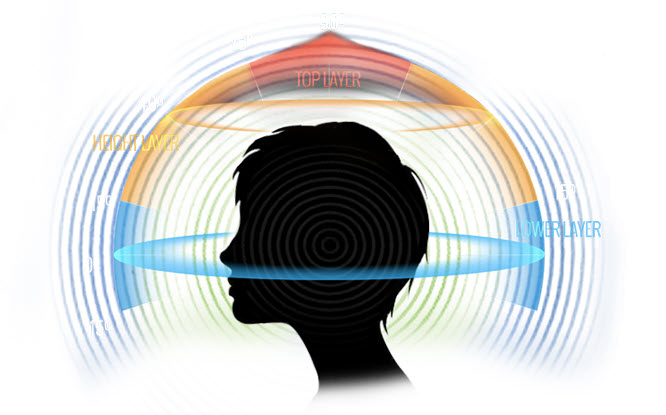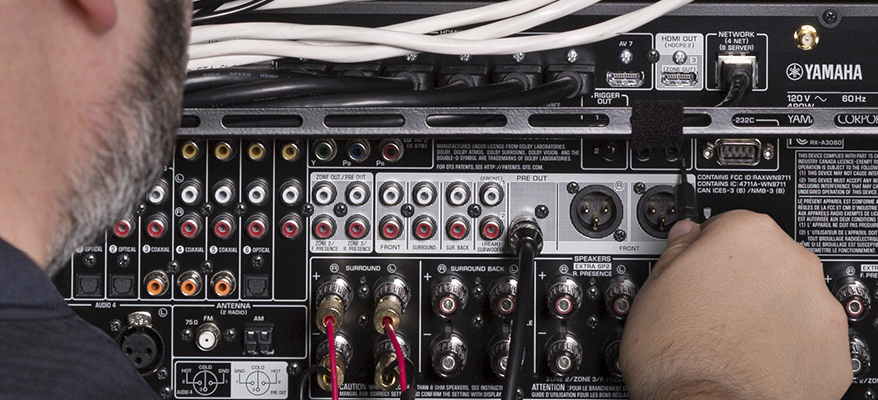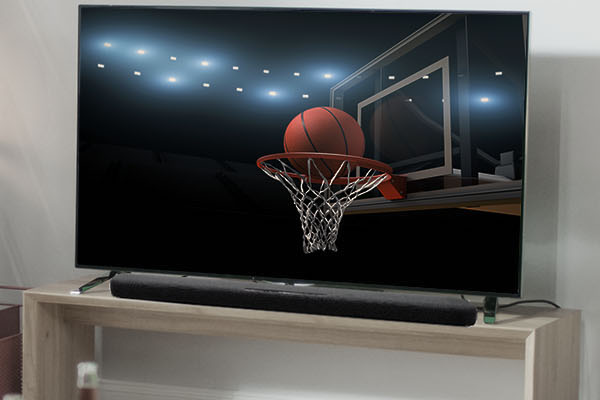What is AURO-3D®? An In-Depth Exploration
Going vertical with an immersive 3D audio experience.
AURO-3D® is a three-dimensional audio technology that immerses the home theater listener in a hemisphere of sound. It uses virtual height channels (no in-ceiling speakers required) to achieve a transformative audio experience that many other multichannel systems cannot offer.
While AURO-3D is fairly new, it’s already been employed in a number of popular films, including Red Tails, How To Train Your Dragon 2, Black Panther, The Expendables 3, American Sniper and Spider Man: Homecoming. In this posting, we’ll take a deep dive into how it all works.
Upmixing
To better understand AURO-3D, it’s helpful to know about a digital process called upmixing, where an algorithm is used to spread a 2-channel stereo audio signal (or even a mono one) over the other speakers in a multichannel setup. Upmixing is usually done during film postproduction with software plug-ins that include tools for dialog extraction for the center channel and spatial and/or frequency analysis to “intelligently” distribute audio into the surround speakers.
This is especially useful when older archive material is the only thing available to work with, such as older stereo or mono recordings that need to be repurposed into surround sound. But upmixing can also be applied to 5.1- or 7.1-channel mixes to increase the number of channels carrying signal and the size of the perceived soundscape. It’s an integral part of AURO-3D, since it allows the technology to be fully backward-compatible with legacy content, whether it was originally mixed only for stereo/mono or for 5.1- or 7.1-channel distribution.
Scaling the Heights
AURO-3D adds one or two extra layers to a standard 5.1- or 7.1-channel surround sound mix. The sound assigned to these layers, called Height and Top, are perceived by the listener as coming from above the existing surround channels.

Audio assigned to the Height layer is routed to two additional speakers mounted over the screen in your AV setup, above the 5- or 7-channel layer of speakers (which are typically set up at eye level) and pointed downward at a 30 to 50 degree angle. This is known as an AURO 9.1 configuration.
By adding two more speakers pointed downward at a steeper (up to 90 degree) angle, an optional Top layer is created. This AURO 11.1 configuration causes the sound from the “Top” speakers to be perceived as coming from overhead… without the use of physical in-ceiling speakers (though these can be used if preferred). This Top layer, which is primarily used for special effects such as flyovers, creates a fully immersive surround experience.
Unlike Dolby Atmos, which requires actual ceiling-mounted speakers, the two (or four) additional AURO-3D speakers fill in the gap between the floor and the ceiling, creating what the company calls a “vertical coherent stereo field” — translation: fewer sonic “holes.”
In the Ceiling
Although not strictly required by AURO-3D, speakers physically mounted in the ceiling can provide a listening experience that standard speakers can’t always deliver. Yamaha makes a number of compact yet powerful in-ceiling speakers, including the NS-IC800 and the 100-watt 3-way NS-IW280C with 6-1/2″ cone woofers and dual 3/4″ dome tweeters.
Mounting speakers in the ceiling involves a bit of planning and forethought. You’ll need to think about location, connections to the AV receiver, templating, tools and other factors. But don’t worry — these speakers are actually pretty easy to install. You can find step-by-step directions in this blog.
In order to experience AURO-3D, you need an AV receiver that’s outfitted with the appropriate software decoder. Both the 9.2-channel Yamaha AVENTAGE RX-A6A and the 11.2-channel AVENTAGE RX-A8A include an AURO-Codec decoder and world-class AURO-Matic upmixer, enabling a fully immersive sound experience when used with a Blu-ray player and an AURO-3D speaker array. And, because AURO-3D is fully backward-compatible, such systems transport the listener into the virtual world of their favorite content, regardless of the original audio format used. Great things lie ahead!
Image courtesy of AURO-3D.
Check out this related blog article:
Surround Sound Systems Explained: Dolby®, AURO-3D® and More
Click here for more information about the Yamaha AVENTAGE RX-A6A AV receiver.
Click here for more information about the Yamaha AVENTAGE RX-A8A AV receiver.















